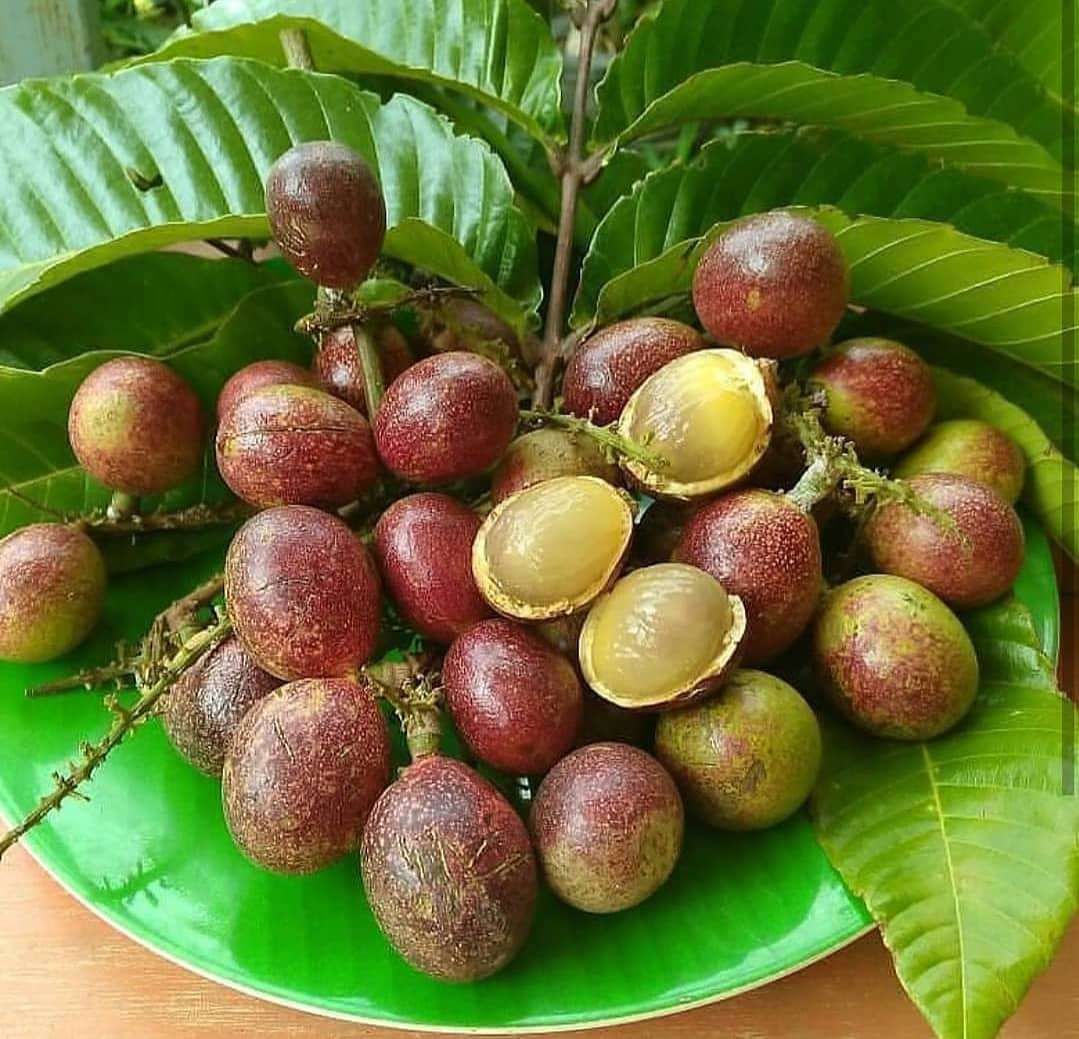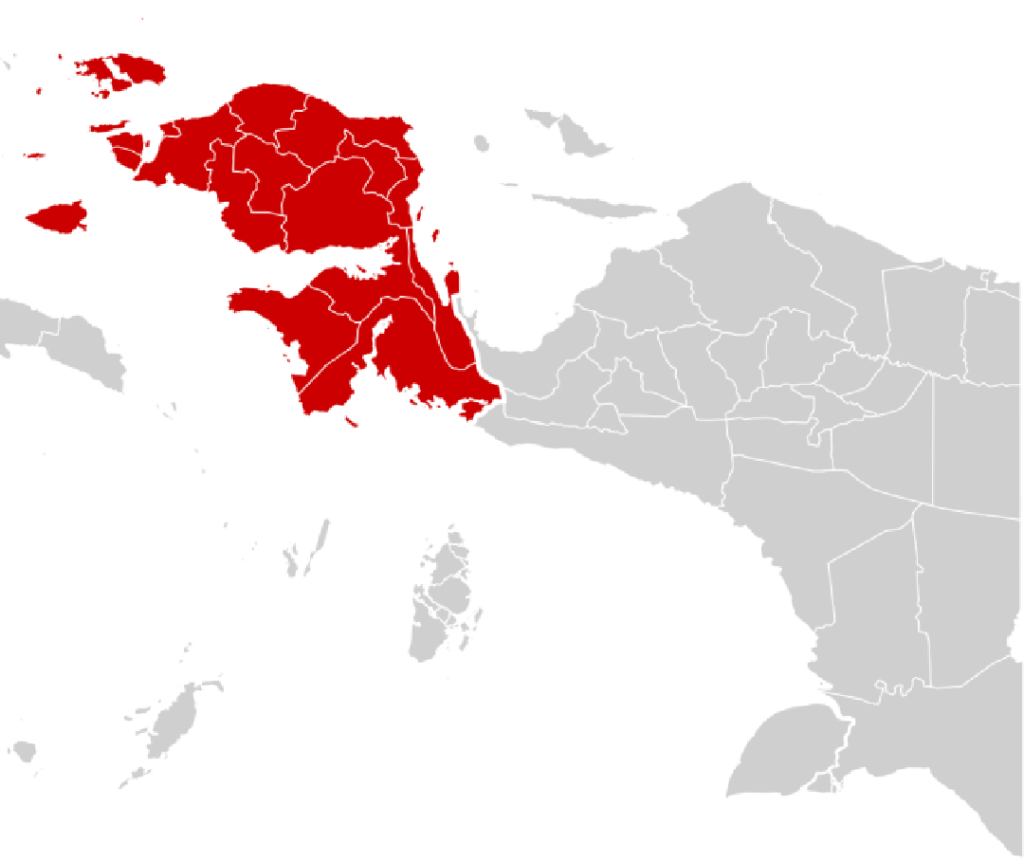In the highlands and rainforests of Papua, where ancient trees whisper in the tropical breeze and rivers flow through emerald valleys, there grows a fruit unlike any other. Known locally as matoa (Pometia pinnata), this sweet and translucent fruit is a symbol of Papuan pride—a natural gift that carries with it a story of culture, resilience, and abundance.
Once found only in the remote forests of Papua, matoa has now made its way to bustling markets across Indonesia. During harvest season, stalls in the Pharaa Market of Sentani overflow with its glossy fruits, their reddish-brown shells gleaming under the morning sun. But beyond its exotic taste lies a deeper narrative—one that connects tradition, biodiversity, and health in a way that only nature can weave.
The Origins of Matoa: A Native Treasure of Papua
The matoa tree is native to the lowland rainforests of Papua and neighboring Pacific regions. Towering up to 18 meters, the tree belongs to the Sapindaceae family—the same family as rambutan and lychee. It thrives in the humid, fertile soils of eastern Indonesia, particularly in Jayapura, Sentani, and Manokwari.
According to ethnobotanical records and local oral histories, matoa has long been part of Papuan life. Villagers in the interior have cultivated and harvested it for generations, not only as a food source but also as a symbol of hospitality. Offering matoa to guests is a gesture of respect—a sweet way of saying, Welcome to our home.
The word “matoa” itself is said to come from local dialects that refer to sweetness or abundance. Indigenous Papuans regard it as a sacred forest fruit, often consumed during community gatherings, harvest celebrations, and church feasts. Its abundance during certain months—especially between October and December—marks a period of joy and unity across many Papuan villages.
A Sweet and Exotic Flavor Unlike Any Other
To those tasting matoa for the first time, its flavor is a delightful surprise—a fusion of tropical familiarity and exotic uniqueness. The flesh, soft and translucent like rambutan or longan, bursts with a blend of sweetness and freshness. Some describe it as tasting like a mix between lychee and durian, with a faint aroma of honey.
There are two main varieties of matoa recognized by Papuans:
- Matoa Kelapa (Coconut Matoa)—This type has firmer, chewier flesh, resembling coconut in texture, and a rich sweetness that lingers on the palate.
- Matoa Papeda (Soft Matoa)—Softer and juicier, this variant melts in the mouth with a refreshing taste that makes it perfect for fruit salads or natural desserts.
When the harvest season arrives, the fruit becomes a centerpiece of local markets. As reported by RRI Papua, the Pharaa Market in Sentani often witnesses an overflow of fresh matoa during the peak season, attracting both local buyers and tourists. Vendors arrange them in woven baskets, their fragrance filling the air—an aroma that tells every passerby: it’s matoa season in Papua.
From Forests to Markets: A Growing Economic Opportunity
What was once a forest fruit has now become an emerging agricultural commodity. The growing popularity of matoa has encouraged Papuan farmers to cultivate it on a larger scale. The Jayapura Regency Government and local cooperatives have begun promoting matoa farming as a sustainable livelihood option, particularly for smallholder farmers.
Matoa trees require minimal care once established and can bear fruit twice a year under the right conditions. Their adaptability to lowland climates and resistance to pests make them an ideal crop for community-based farming programs. As global interest in exotic tropical fruits grows, matoa presents a promising export potential.
At the Pharaa Market, traders like Mama Yuliana, a longtime fruit seller, share stories of how matoa has transformed the local economy. “When the season comes, our income doubles,” she says. “People from outside Papua come looking for this fruit. It reminds them of home.”
This local enthusiasm reflects a broader trend. Across Indonesia’s urban centers—Jakarta, Surabaya, and Makassar—matoa is increasingly found in supermarkets and online stores, often marketed as Papua’s premium fruit. Its rising popularity has also inspired small businesses to produce matoa-based processed goods, from jams and juices to herbal teas and skincare products.
A Powerhouse of Nutrition and Health Benefits
Beyond its delightful flavor, matoa is a treasure trove of nutrients. Scientific studies and traditional knowledge alike praise its impressive range of health benefits. The fruit contains vitamin C, vitamin E, and powerful antioxidants that support the immune system, improve skin health, and combat premature aging.
- Boosts Immunity
With its high vitamin C content, matoa strengthens the body’s natural defenses. Regular consumption helps the body ward off infections and maintain overall vitality—an important factor for people living in tropical climates.
- Improves Skin Health
Thanks to vitamin E and antioxidants, matoa helps maintain youthful, radiant skin. Locals often refer to it as a “natural beauty fruit,” believing that its consumption leads to a glowing complexion.
- Enhances Energy and Reduces Fatigue
The fruit’s natural sugars—fructose and glucose—provide a quick energy boost, making it ideal for those engaged in physical labor or outdoor activities. It is also rich in minerals that help reduce stress and muscle fatigue.
- Supports Heart Health
Antioxidants found in matoa help regulate blood pressure and prevent cholesterol buildup, reducing the risk of cardiovascular diseases.
- Contains Antimicrobial Properties
Some traditional healers in Papua use matoa leaves and bark for herbal remedies. Studies cited by Mongabay Indonesia indicate that the extract of matoa has antimicrobial properties that may help prevent bacterial infections.
These benefits are increasingly being recognized beyond Papua. Nutritionists in Indonesia are beginning to promote matoa as part of a balanced diet, emphasizing its role as both a traditional and functional food.
Cultural Symbolism: Matoa as an Emblem of Unity
For Papuans, matoa is more than a fruit—it is a cultural emblem. Its annual harvest is a time of joy, community, and thanksgiving. Families gather to pick the ripened fruits from towering trees, sharing laughter and stories as they work together. The event often ends with communal feasts where matoa is served alongside other local specialties such as sago and roasted fish.
The symbolism runs deep. Just as the matoa tree stands tall and strong, Papuans see it as a representation of endurance and unity. The fruit’s sweetness is a metaphor for the sweetness of life and harmony when people live in balance with nature.
This cultural dimension is being increasingly highlighted in regional festivals. Events like the Matoa Festival in Jayapura celebrate the fruit not only as an agricultural product but as a cornerstone of Papuan identity. Local artists, farmers, and students come together to showcase matoa-based creations, from traditional snacks to handcrafted souvenirs inspired by the fruit’s shape and color.
Sustainability and Conservation Efforts
As demand for matoa grows, sustainability has become an important concern. Overharvesting from wild trees can threaten the natural ecosystem if not managed properly. Recognizing this, environmental groups and local governments have launched community-based programs to promote sustainable cultivation.
Farmers are encouraged to plant matoa in agroforestry systems—intercropping it with other native species to maintain biodiversity and prevent soil erosion. This approach not only protects the environment but also ensures that future generations can continue to enjoy the fruit’s benefits.
Matoa’s ecological significance extends beyond its fruit. Its large canopy provides habitat for birds and shade for smaller plants, making it an integral part of Papua’s forest ecosystem. Conservationists see it as a “flagship species” that can help drive reforestation efforts in degraded areas.
The Road Ahead: From Local Heritage to Global Potential
Today, matoa is beginning to capture international attention. As global consumers seek new superfruits rich in antioxidants and unique flavors, matoa has all the characteristics of the next tropical sensation. Food companies are experimenting with matoa-based beverages and health supplements, while Indonesian entrepreneurs are exploring export opportunities.
However, the key challenge lies in building a supply chain that maintains quality and authenticity. To preserve its status as a Papuan specialty, stakeholders must ensure that farmers receive fair prices and that cultivation practices remain environmentally friendly.
If managed wisely, matoa could become a flagship product for Papua—one that combines economic development, cultural pride, and ecological stewardship. It represents the possibility of sustainable growth rooted in local wisdom.
Conclusion
In every matoa fruit lies the spirit of Papua—its rainforests, its people, and its timeless connection to nature. From the farmers who climb tall trees to harvest the ripened clusters to the traders who sell them with pride in Sentani’s markets, matoa carries a story of resilience and gratitude.
As the world rediscovers this rare gem, Papua’s message is clear: sustainability and tradition can coexist beautifully. The sweetness of matoa is not just in its taste, but in the way it reminds us that harmony between humans and the earth is still possible.


